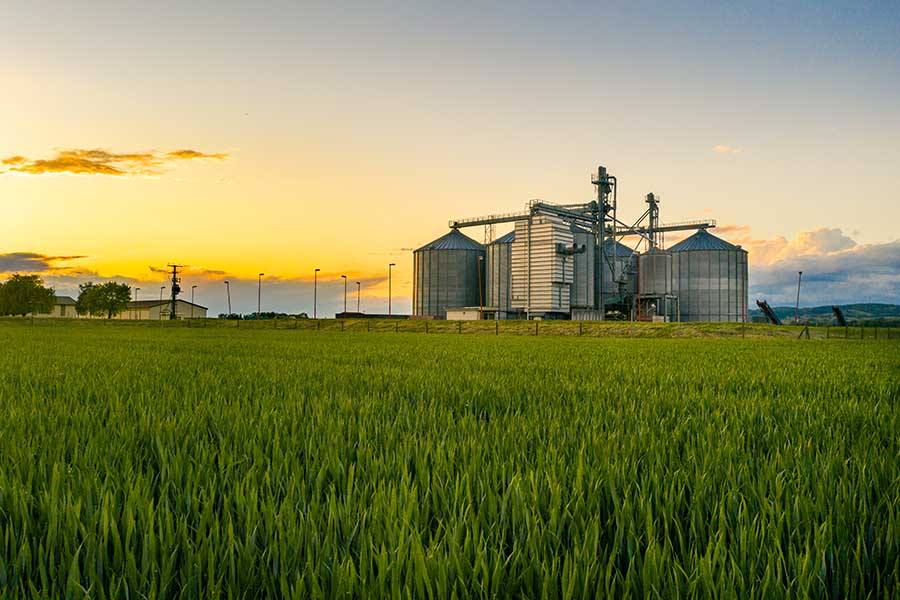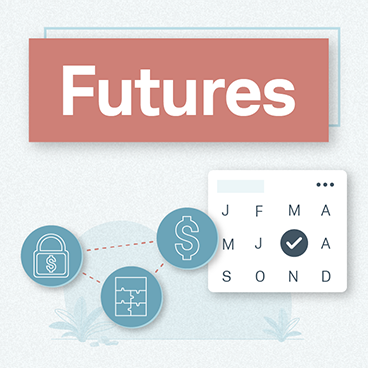
Summer is "prime time" for many things, including commodities. In the months ahead, people will increasingly be tending gardens, firing up their grills and filling up their gasoline tanks for road trips. How much will you fork over to your local butcher for your July 4 cookout? How much will you pay at the pump when you set out on your cross-country vacation?
If you've been following commodity markets, such as crude oil, corn and cattle, you may already have a pretty good idea.
From an investing standpoint, commodities are considered an "alternative" asset class, as opposed to traditional stocks and bonds. Such alternative investments are supposed to be uncorrelated or less correlated with widely held stocks, in theory providing some protection from broader market swings. For example, if stocks make a big move lower or higher, alternative assets may move the opposite way—or at least not to the same degree as stocks.
Futures markets and exchange-traded funds (ETFs) offer avenues into the commodity arena, and there are numerous "commodity stocks"—publicly traded companies directly involved in commodity production and processing. Even if trading futures isn't your bag, the commodity markets are worth watching, and knowledge of commodities can help inform an investing strategy, says Mike Zarembski, director of futures trading at Charles Schwab & Co. After all, futures markets by definition exist to anticipate.
"By keeping an eye on commodities, you can get an idea of what's going on in the overall marketplace and economy and track important global developments that affect everyone," Mike says. "Why are gasoline prices going up? Why is meat so expensive? Why is inflation so high? Answers lie in commodity markets."
The following recaps recent developments in some key commodities (with a little summertime spin):
Motorists catching a break, but trouble ahead for economy?
Oil is the world's most actively traded commodity, based on futures trading, and wherever the crude market goes, prices for gasoline, diesel, jet fuel and other energy sources typically follow. In 2022, crude oil futures soared to $130 a barrel in the wake of Russia's invasion of Ukraine, sending U.S. retail gasoline to record highs above $5 per gallon by June, according to GasBuddy.com.
Crude prices have dropped sharply from 2022 highs, with futures based on West Texas Intermediate oil, the U.S. benchmark, sinking to a three-month low under $67 near mid-June. Part of that decline reflected escalating concern over a recession that would likely curb demand for motor fuels.
For U.S. motorists, there is some good news: pump prices this summer look to be substantially below last year's levels. Regular-grade gasoline is expected to average about $3.51 per gallon during the second and third quarters this year, down 18% from $4.29 during the same period in 2022, based on an Energy Department forecast.1
Crude oil "is as global a market as anything," Mike says. "It gets a lot of attention and people can relate to it. Also, for active traders, the oil market has lots of volatility and therefore lots of opportunities."
Tough row to hoe for farmers
Thanks to favorable weather, farmers across the Midwest finished planting corn and soybeans ahead of the average pace and appeared poised for a big harvest.2
Farmers in Iowa, Illinois and other top agricultural states are expected to seed a combined 179.5 million acres to corn and soybeans this year, based on an Agriculture Department forecast, up 2% from 2022 and more than enough to cover the entirety of Texas and a slice of Oklahoma. This fall's harvest is forecast to generate a record 15.3 billion bushels.
Drought in parts of the Midwest slashed harvests in recent years, putting U.S. corn supplies on track to hit a decade low this year and making it important farmers avoid crop shortfalls this year because high grain and meat prices have contributed to soaring inflation (food CPI in May was up 6.7% from the same month in 2022, according to the Labor Department). The war in Ukraine, which like the U.S. is a top global grain exporter, has further disrupted grain supplies.
Corn and soybeans are fed to livestock and are also used for ingredients in an array of food products that line grocery store aisles. With most of the U.S. summer growing season ahead, futures prices for corn and soybeans offer a window into market expectations for the crop. Corn and soybean futures hit decade highs in 2022 but have fallen over the past two months amid expectations for a bumper harvest this fall.
Steaks, burgers still pricey
Unlike crude oil and gasoline, there's little relief in sight for consumers when it comes to high meat prices.
In mid-June, live cattle futures surged to an all-time high above $1.78 a pound, up nearly 33% over the previous 12 months. The increase reflects high feed costs and a shrinking U.S. herd, as persistent drought in the Plains withered pastures and forced many ranchers to sell animals, including cows that otherwise would have been kept for breeding. The U.S. beef cow herd shrank to a six-decade low earlier this year, according to the Agriculture Department. Strong beef demand from China and other top export markets is another contributor.
As a result, grilling out this summer will remain a costly endeavor. Retail meat prices are down from record levels in 2022 but remain elevated and appear to be turning higher again. Lean and extra lean ground beef averaged about $6.70 per pound in May, up 2.6% from an average of $6.53 last summer, according to Agriculture Department data. Sirloin steak averaged $10.75 per pound in May, up 2.1% from $10.53 last summer.
A window on the world
Oil, grains and livestock are just a few examples of commodities that play vital roles in the global economy and our everyday lives. Other examples include lumber, metals (copper, gold, palladium, platinum, silver), natural gas and the so-called softs (cocoa, coffee, cotton, orange juice, sugar).
Commodities are everywhere, and you are a participant in the commodity markets whether you realize it or not. When you grab your morning coffee, fill up your vehicle's tank and fill your cart at your local supermarket, chances are what you're getting started out as a commodity of some sort. Keeping an eye on commodities can help you understand what's happening in the world and what to expect, and perhaps even spot investing opportunities.
1 U.S. Energy Information Administration, https://www.eia.gov/outlooks/steo/
2 DTNFP.com, "USDA Crop Progress Report: Corn, Soybean Planting Slows Slightly Last Week, But Still Ahead of Average Pace," May 15, 2023.
Investors should consider carefully information contained in the prospectus or, if available, the summary prospectus, including investment objectives, risks, charges, and expenses. Please read it carefully before investing.
The information provided here is for general informational purposes only and should not be considered an individualized recommendation or personalized investment advice. The investment strategies mentioned here may not be suitable for everyone. Each investor needs to review an investment strategy for his or her own particular situation before making any investment decision.
Investing involves risk including loss of principal.
All expressions of opinion are subject to change without notice in reaction to shifting market conditions. Data contained herein from third-party providers is obtained from what are considered reliable sources. However, its accuracy, completeness or reliability cannot be guaranteed.
Examples provided are for illustrative purposes only and not intended to be reflective of results you can expect to achieve.
Commodity-related products, including futures, carry a high level of risk and are not suitable for all investors. Commodity-related products may be extremely volatile, illiquid and can be significantly affected by underlying commodity prices, world events, import controls, worldwide competition, government regulations, and economic conditions, regardless of the length of time shares are held. Investments in commodity-related products may subject the fund to significantly greater volatility than investments in traditional securities and involve substantial risks, including risk of loss of a significant portion of their principal value.
All corporate names are for illustrative purposes only and are not a recommendation, offer to sell, or a solicitation of an offer to buy any security.
Past performance is no guarantee of future results. The opinions presented should not be viewed as an indicator of future performance.
The information provided here is for general informational purposes only and is not intended to be a substitute for specific individualized tax, legal or investment planning advice. Where specific advice is necessary or appropriate, consult with a qualified tax advisor, CPA, financial planner or investment manager.
Schwab does not recommend the use of technical analysis as a sole means of investment research.
Commodity interests and cash in futures accounts are not protected by SIPC. Futures trading involves a high level of risk and is not suitable for all investors. Certain requirements must be met to trade futures. Please read the Risk Disclosure for Futures and Options before considering any futures transactions. Charles Schwab Futures and Forex LLC, a CFTC-registered Futures Commission Merchant and NFA Forex Dealer Member. Charles Schwab Futures and Forex LLC is a subsidiary of The Charles Schwab Corporation.
0623-3DP5

